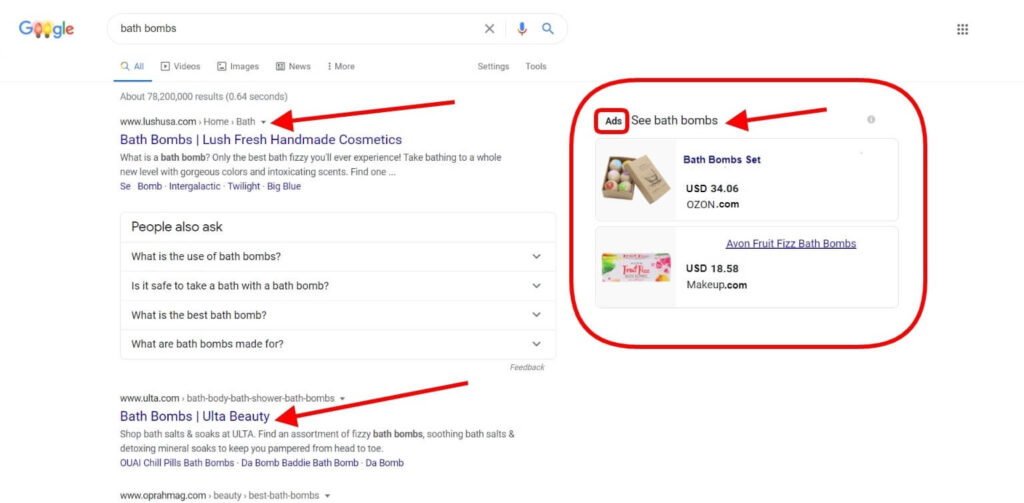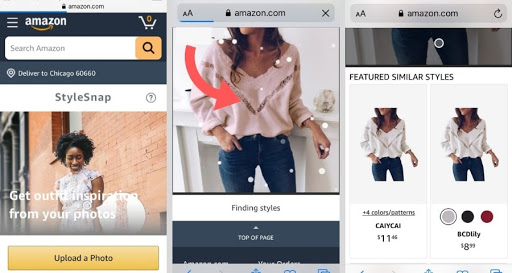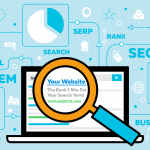Do you have an eCommerce store? Then this article will guide you to implement amazing search engine marketing and advertising strategies.
E-commerce marketers continuously face the necessity of coming up with new and more effective ways of leading people to the online store and successfully guiding them through the sales funnel as they convert into buyers.
A huge part of the deal lies on the “shoulders” of the store’s rankings and positions among the search engine results. This is why search engine marketing is essential for online retail, as the marketing money must be spent wisely both on impressions and on the growth of the site’s organic search results.
On this page, we’ll introduce you to SEM, explain how it differs from SEO, and simply paid ads. Plus, we’ll go through some of the main points of how it works and which modern technology is impacting the trends. Let’s get started!
Search Engine Marketing: E-commerce Intro
Regardless of the size of your online business, if you want it to be successful and compatible, you won’t go far without proper search engine marketing (SEM).
The thing is that most users allocate new sites that they visit by asking a search engine. In the case of e-commerce, as a rule, they have a commercial intent as they wish to buy something and are looking for something specific (to compare, in the scenario with social media stores that are up on Facebook, Instagram, or Pinterest, users generally stumble upon something they like and buy it, they don’t search for it).
Say they go to Yahoo or Google and enter their query “robot vacuum cleaner.” Based on the words that were used by the person, the search engine offers specific page results.
These results appear after search engines “crack” complex algorithms that are aimed at showing only the most accurate and relevant information. Such algorithms keep in mind dozens of factors, including location, keywords, intent, etc.
This is where SEM comes in, and it’s responsible for your website’s pages to make it as high as they can among the search results on the basis of this or that query.
As of today, the leading search engine is unsurprising, Google. They were followed by smaller shares of Bing and China-oriented Baidu.
And because the number of searches made from mobile devices is streaming up by the month, business owners must seriously consider optimizing their site for mobile search or even building a progressive web application as a step towards enhancing user experience and mobile conversions.
But which brings more powerful results regardless of the user device: organic search or paid ads? According to Smart Insights:
“In 2020, the combination of organic (40%) and paid search (28%) is still as powerful as ever, with 68% of all trackable website traffic coming from a combination of the two tactics.”
From this, we can conclude that e-commerce marketers should surely “join forces” when it comes to selecting the right tactics for promoting an online store.
SEM, SEO, or PPC: What’s the Difference?
Before we jump straight over to how you can use SEM to benefit your online sales, let’s untangle the commonly confused terms that deal with SEM, PPC, and SEO.
Search engine marketing (or SEM) is a major strategy in digital marketing aimed at scaling up the positions and visibility of a page or site among SERPs (page results that are provided by search engines according to an input inquiry). This is mainly done in SEM by using optimized paid ads.
Initially, SEM was considered as a term that combined both SEO (search engine optimization based on boosting organic search results payment-free) and PPC (paid search and pay-per-click ads that you’ll be charged for whenever someone follows your ad link).
Today, SEM is practically equivalent to the terms of “paid search” and “PPC ads,” excluding SEO as a separate stem. Yet if we bring up the minor difference between SEM and PPC, SEM is more about a targeted approach to the audience reached by incorporating the strategies of SEO in ad campaign creation.
In other words, SEM is a bit more than just setting up a random paid search ad; it focuses on both concepts, prioritizing the display of specific things to cherry-picked targeted audiences relying on keyword and audience-optimized ads.
What’s the major difference between SEM/PPC and SEO? Paid ads to bring much faster results than plain organic SEO. PPC is the quickest way to get your website the traffic it needs, but this “path” requires investment.
Here’s an example to make it clearer how the difference in SERP looks like. For instance, your e-commerce store specializes in selling bath and beauty products, let’s type in “bath bombs” in the search bar. Below are the results.
As you can see, the block marked “Ads” stands aside (this is needed for visibility and grasping attention) from the organic search results, among which are the sites of Ulta and LushUSA.

Often such sponsored advertisement links can even be without images, and they look just like any other search result. They appear at the top positions of the SERP, not on the side, but are always marked “Ads.”
SEM in E-commerce: How It’s Done
As it was shortly mentioned earlier, using a combined SEO-optimized SEM approach is considered one of the search engine marketing best practices in e-commerce. Let’s try to get a better understanding of how it all works.
The most prominent network for SEM ads is Google Ads, followed far behind by Bing Ads. This is why we’ll focus on the first one. When setting up an ad campaign, a marketer must keep in mind various things:
- use only carefully chosen, suitable, and well-researched keywords that’ll correlate with the e-commerce stores product lines and services best;
- bear in mind location marketing that’ll be capable of echoing “near me” or city/neighborhood-specific queries based on the indicated location reach of the ad;
- craft the optimized text of the ad that’ll contain a headline, body text, a call-to-action, link;
- Indicate the bid price (the ad will then go through an auction process. Thus, you need to mark how much you’re ready to pay for every click on your ad when it appears within the SERP).
A little more about the auction at this point: prior to appearing in the search results, each advertisement passes the auction procedure. The auction will be based on the keywords that you’ve entered, the sum of money that you’ve marked in the maximum bid, and the ad’s quality score.
If the search engine decides that the keywords that you plan to run ads for are suitable to the user’s intent, the ad enters the auction.
Obviously, not all ads will be shown for a keyword (in that case, there might just be too many ads, so the spots within the SERPs are limited, that’s why they’re auctioned). Yet if your ads and landing pages are suitable for the audience and their queries, you stand a good chance.
E-commerce Search Engine Marketing: Modern Technology
Another challenge before digital marketers is handling the matter of tackling search inquiries that are made with the use of modern technology. This, for instance, includes such artificial intelligence-powered technology as digital assistants (like Siri or Alexa), voice search in general, and image recognition.
Voice Search, AI Assistants & Search engine marketing
With so many “helpers” and voice assistants out there, it is vital to start teaching your e-commerce store to communicate with such modern technology.
The main difference here is in the way how people search using spoken language versus how they do the same with typed text.
As a rule, text queries are much shorter and compact. A sample request during a dialogue with Alexa could be something like “Alexa, could you please find a set of crystal wine glasses under 100 USD with free delivery?”. Whereas, the same thing in text format could be something like “crystal wine glasses buy.” Do you see the difference?
By optimizing the pages of your website to align to common search request patterns done by voice, you can boost your site’s compatibility.
Image Recognition & SEM
A good example of image recognition use in e-commerce is the Amazon StyleSnap feature. Incorporated right into the e-commerce website, it allows users to upload a photo or image that features an item that they’d like to buy.
This saves your users tons of time and, ultimately, makes them much more satisfied. Not to mention that by having such features you can increase the cases of spontaneous buys.
The system runs through the possible product matches that look similar to what’s depicted on the image and offer look-alike items for purchase. Do you see how accurate the results are with the sweater example below?
Screenshots were taken on Amazon.

For a marketer, such “image SEO” basically means that you must help search engines powered by AI to find the products that are sold in your store.
Therefore, every image that you have up in your e-commerce store should be of outstanding quality, not to mention that it should have proper naming, descriptions, and alternative tags.
Best if these texts feature your brand name, the product name, and a to-the-point description with a keyword.
In turn, these SEM-optimized images can make it to the “Ads” blocks in search results (remember the first example with bath bombs?).
Final Say
Search engine marketing isn’t just about setting up a random paid ad; and it’s more about a targeted, smarter approach that uses the best practices of organic SEO to bring back amazing results.
Of course, if you’re craving very quick results and need ASAP visibility, then it makes sense to invest in an optimized pay-per-click campaign.
The same applies to just using SEO as a separate tactic, yes, it takes longer to show results, yet it’ll cost you less and return what you’re craving after some time.
At best, use a combination of both SEO and SEM to grow your e-commerce site; this way, you’ll surely be on the right track!





